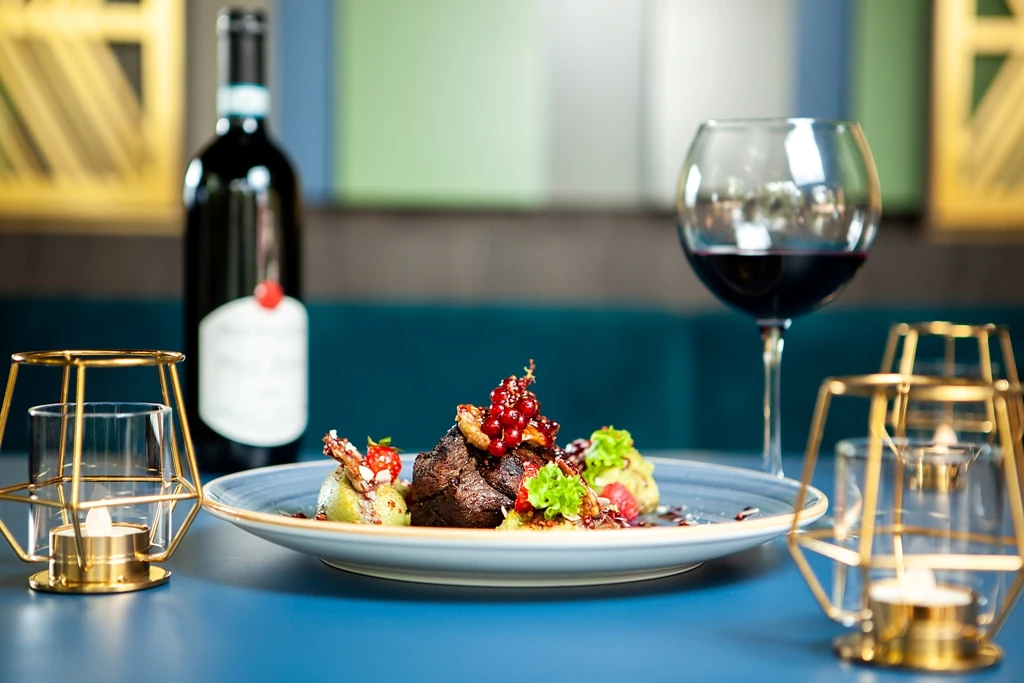Food pairing and wine selection can greatly enhance your dining experience by creating harmonious and complementary flavors that bring out the best in both the food and the wine.
“The Art of Food Pairing and Wine Selection: Elevate Your Dining Experience with Expert Tips”
Here’s a step-by-step guide to help you elevate your dining experience through thoughtful food and wine pairing:

1. Understand Basic Principles:
- Match Intensity: Pair lighter wines with lighter dishes and heavier wines with richer, more robust dishes.
- Complement or Contrast: Choose wines that either complement the flavors of the dish or provide a contrasting flavor profile to create balance.
- Consider Acidity: High-acid wines pair well with rich or fatty foods, as they cut through the richness.
- Balance Sweetness: Dessert wines are sweeter and should be sweeter than the dessert itself.
2. Analyze the Dish:
- Consider the primary flavors, ingredients, cooking methods, and sauces used in the dish.
- Identify the dominant flavor components such as sweetness, acidity, saltiness, bitterness, and umami.
3. Analyze the Wine:
- Understand the wine’s characteristics: acidity, tannins (for reds), sweetness level, and flavor profile (fruity, earthy, oaky, etc.).
- Take note of the wine’s body (light, medium, full), which relates to its viscosity and weight on the palate.
4. Match Similar Flavors:
- Pair wines and dishes with similar flavor components. For example, a citrusy Sauvignon Blanc can work well with a lemony seafood dish.
5. Complement with Contrasting Flavors:
- Pair contrasting flavors to create balance. A rich, buttery Chardonnay can complement a creamy pasta dish.
6. Consider Regional Pairings:
- Many regional cuisines have traditional wine pairings that work well due to shared cultural and flavor elements.
7. Think about Texture:
- Pair the wine’s body with the dish’s texture. Light wines go well with delicate dishes, while heavier wines match with hearty, richer dishes.
8. Keep Acidity in Mind:
- High-acid wines like Champagne or Pinot Noir can cut through fatty or fried foods, cleansing the palate.
9. Don’t Forget about Tannins:
- Tannic red wines (like Cabernet Sauvignon) can complement dishes with protein and fat, as the tannins interact with the proteins in food.
10. Experiment and Trust Your Palate:
- Experiment with different pairings to discover your preferences. Everyone’s taste is unique, so trust your own palate.
11. Consider the Occasion:
- Tailor your choices to the occasion. Casual gatherings may call for more accessible wines, while special occasions might warrant more premium selections.
12. Mindful Wine Temperatures:
- Serve wines at the appropriate temperature to ensure their flavors are showcased best. White wines are generally served colder than reds.
By paying attention to these steps and considering the interplay of flavors, textures, and characteristics, you can create memorable dining experiences that elevate both the food and the wine. Remember, while guidelines are helpful, personal taste always plays a significant role, so feel free to explore and find pairings that resonate with your.
How to Culinary Creativity? Fusion Cuisine that Pushes Boundaries









